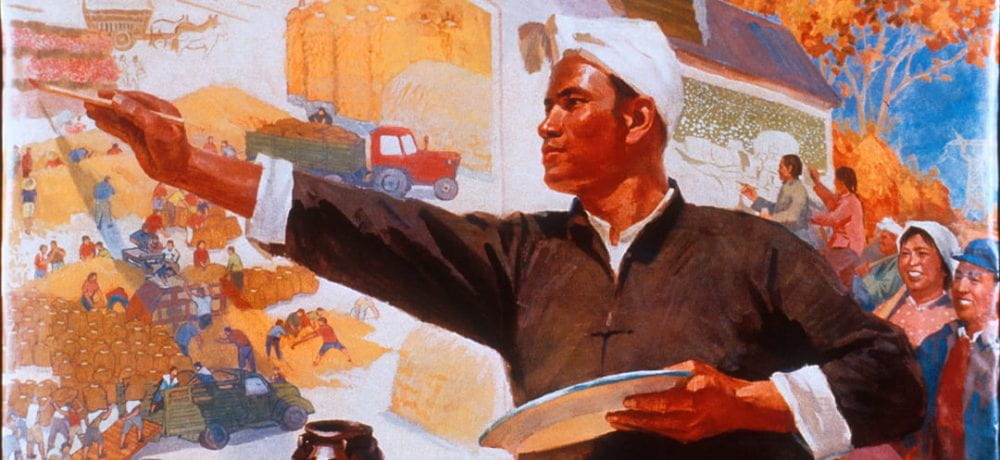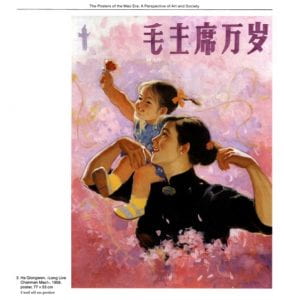For this blogpost I elected to write regarding a political poster painted by Ha Qiongwen, titled “Long Live Chairman Mao!” In order to fully understand this political poster, somebackground regarding the era in which it was painted may be helpful. In 1949, China ushered in a new era of government which was led by the Communist Party of China and Chairman Mao;the de facto leader of China until his death in 1976 (Yaochang 2014: 290). Mao was a selfprescribed Leninist (at least until he began developing his own theory of rule) and felt that
literature and art should an integral part of the proletariats enterprise. Essentially, this meant thatMao aimed to use the majority of literature and art being composed in China at the time tofurther his political agenda. With a large portion of the people in China during this time being illiterate, Mao needed to convey his political content in a way that people would be able tounderstand with little to no education. As such, Mao made a speech after his election in 1949 that set Socialist Realism as the “…official theory and method of artistic and literary composition…” in China during his reign (Yaochang 2014: 290-291). This declaration somewhat restricted what artists and writers could publish during this period, as if the Communist Party of China deemed awork to be ‘inadequate’, the work would not be published/allowed for distribution.
When examining the poster I selected, one will see a young child and her mother playing in what appears to be cherry blossoms, with the text “Long Live Chairman Mao!” at the top. When first published this poster was revered by the CPC, however once the Cultural Revolution
started this was not the case. Upon further inspection, one will notice that the woman holding the child is wearing rather nice clothing, suggesting she is a member of the bourgeois and not the proletariat. Further, no physical depiction of Mao is present, which became more and more essential to the CPC as Mao engrained himself into all aspects of Chinese society. Qiongwen became an object of criticism during the Cultural Revolution, and was publicly humiliated and beaten on numerous occasions due to his slight deviation from the CPC’s standard (Shen 2000: 192).
Bibliography:
Poster and Historical Background
Yaochang, Pan. “The Posters of the Mao Era: A Perspective of Art and Society.” Artibus et Historiae, vol. 35, no. 69, IRSA, Jan. 2014, pp. 289–304.
Personal Information Regarding Ha Qiongwen
Shen, Kuiyi. “Publishing Posters Before the Cultural Revolution.” Modern Chinese Literature and Culture, vol. 12, no. 2, 2000, pp. 177–202. JSTOR, www.jstor.org/stable/41490832. Accessed 17 Apr. 2020.



I found it fascinating that the Communist party could decide whether or not to publish certain pieces of art and distribute them to the public. The background information that you provided in this post made me realize the realities of how the CCP dictated the production of art in China. After the Cultural Revolution and the establishment of a new communist government in China, Chairman Mao continued to use literature and art to further his political agenda. However, this created strict the guidelines for literature and art. For instance, if an artwork did not have the correct political message behind it, then it would be highly disregarded, even if the work was aesthetically pleasing.